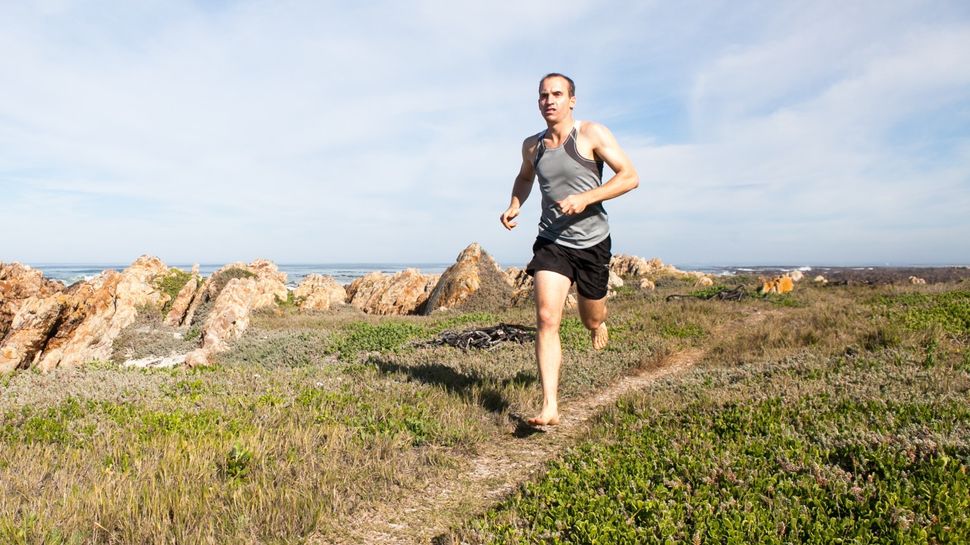From Cold Showers to Barefoot Runs: Are ‘Primal Workouts’ the Future?

A Return to Our Roots
In a world full of high-tech fitness gear, supplements, and fancy gym routines, a surprising trend is gaining momentum: primal workouts. These routines take inspiration from how our ancestors moved—barefoot running, climbing trees, lifting rocks, and embracing the elements. Instead of complicated machines or apps, the primal approach encourages people to strip things back to the basics and reconnect with their natural environment.
The idea behind primal fitness is simple: the human body was designed to move in functional, adaptive ways, not sit at desks or perform isolated repetitions on a machine. From short sprints to long walks, swimming in open water, or even crawling on the ground, primal workouts mimic the physical challenges our bodies evolved to handle.
Natural Movement, Natural Strength
At the heart of primal workouts is a focus on natural movement patterns. These include running, jumping, pushing, pulling, squatting, and carrying. Practitioners believe that incorporating these patterns not only builds functional strength but also improves mobility, coordination, and overall body awareness.
For example, rather than isolating muscles on a leg press machine, a primal workout might include sprint intervals, weighted carries, and deep bodyweight squats. It’s not just about how much you lift—it’s about how well you move.
This approach also places emphasis on barefoot training, with many advocates ditching their shoes in favor of strengthening the feet, improving balance, and connecting with the ground. While it’s not for everyone, studies do show that barefoot training can improve proprioception and reduce certain injuries when done correctly.
Environmental Conditioning
Another key feature of primal workouts is training in natural conditions—often outdoors, regardless of weather. Think cold showers, swimming in rivers, running barefoot through a forest, or doing bodyweight workouts in a park.
Cold exposure, for example, is commonly incorporated through activities like ice baths or cold showers. Supporters claim these boost recovery, improve circulation, and even build mental toughness. While more research is needed, there’s no denying the surge in popularity of cold plunges among elite athletes and fitness enthusiasts alike.
Training in unpredictable or uncomfortable environments also forces the body to adapt in more comprehensive ways. It activates different muscles, challenges stability, and often leads to a deeper sense of satisfaction compared to a typical indoor gym session.
Explore our full range at steroids-uk.com to follow primal routines also incorporate modern tools to support recovery and muscle development. For those looking to blend natural movement with optimal results, professional-grade supplements are often part of the equation.
The Mental Shift
Primal workouts aren’t just physical—they involve a mental reset. In an age of screens, schedules, and stress, there’s something deeply therapeutic about unplugging and sweating it out under the sky. The focus on present-moment awareness, breath control, and natural surroundings can have a meditative effect, which supports mental health as much as physical fitness.
The process often becomes more about building resilience, self-discipline, and a strong connection with one’s body and environment. Many practitioners report improved sleep, reduced anxiety, and higher energy levels—benefits that often come from being active in nature, rather than inside four gym walls.
Simplicity and Sustainability
One of the biggest appeals of primal workouts is their simplicity. No expensive memberships, no special equipment—just the willingness to move and challenge your body. This makes primal fitness incredibly accessible. Anyone can start, whether it’s hiking a trail, doing push-ups at home, or taking a barefoot walk in the park.
Additionally, it promotes sustainable fitness. Rather than chasing aesthetics or burning out on high-volume routines, primal training focuses on long-term strength, health, and vitality. The goal is to move well for life—not just for the next beach season.
Is It Right for You?
Like any fitness trend, primal workouts aren’t one-size-fits-all. People with specific injuries or medical conditions may need to modify certain movements or avoid barefoot training altogether. And while cold exposure and rugged terrain sound adventurous, they can carry risks without proper preparation.
Still, the core philosophy—returning to natural movement, embracing discomfort, and training the whole body—is something almost anyone can benefit from. Whether you’re a seasoned athlete or just starting your fitness journey, integrating primal elements into your routine can offer a refreshing, grounded, and powerful change.
Final Thoughts
As more people grow tired of artificial, high-tech solutions, the appeal of primal fitness continues to rise. It’s not about going backward, but about remembering what our bodies were made to do—move freely, adapt quickly, and thrive in natural environments.
So the next time you lace up for a run, maybe try leaving the shoes at home, take the trail instead of the treadmill, or finish your session with a cold shower. You might just discover that the future of fitness lies in the past.



